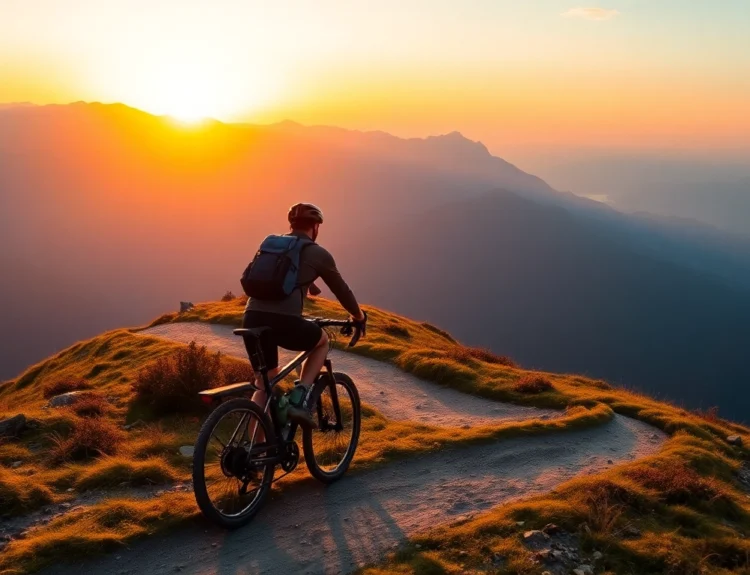Understanding the Guided Hike: What It Means for Your Adventure
Definition and Overview of Guided Hikes
A guided hike is an organized outdoor walking or trekking experience led by a skilled and knowledgeable guide. Unlike independent hikes, guided hikes involve a professional who navigates the trail, shares insights about the environment, and ensures safety throughout the journey. Whether you’re a seasoned adventurer or a beginner exploring nature for the first time, guided hikes provide a structured, informative, and enjoyable way to experience the outdoors.
Specifically, in Indonesia, and particularly in regions like Lombok, guided hikes open doors to some of the most breathtaking landscapes—from volcanic peaks to lush rainforests—while reducing the typical uncertainties associated with trail navigation. This approach ensures that travelers can focus on immersing themselves in the environment without the stress of route-finding or safety concerns.
For those seeking a reliable and immersive experience, exploring guided hike tours in Indonesia is an ideal choice. These excursions are designed to combine adventure with cultural insights, making each trek both exciting and educational.
Benefits of Choosing a Guided Hike in Indonesia
Opting for a guided hike in Indonesia offers numerous advantages that elevate your outdoor experience from ordinary to extraordinary. These benefits include:
- Expert Navigation and Safety: Guides are trained professionals familiar with the terrain, weather patterns, and potential hazards, ensuring your safety at all times.
- Cultural and Environmental Insights: Local guides often share stories, history, and ecological information, enriching your understanding of the region.
- Customized Experience: Guided tours can be tailored to your fitness level, interests, and preferences, offering a more personalized adventure.
- Enhanced Convenience: All logistics, permits, and planning are handled by the tour operator, allowing you to focus solely on enjoying the trek.
- Community and Support: Guided hikes foster social interactions, making the experience more memorable through shared stories and camaraderie.
In the diverse landscapes of Indonesia—from Bali to Lombok to Komodo—guided hikes serve as a reliable gateway for travelers to explore iconic sites such as Mount Rinjani or hidden waterfalls in remote rainforests, all under the watchful eye of experienced guides.
Common Features of Guided Hike Experiences
While the specifics can vary depending on the destination and tour provider, most guided hike experiences share common features that contribute to their appeal:
- Group Size: Typically small groups ranging from 4 to 15 hikers, promoting intimacy and personalized attention.
- Professional Guides: Certified or experienced guides who possess local knowledge, first aid certification, and environmental awareness.
- Pre-Trip Planning: Organization of permits, transportation, meals, and accommodations where necessary.
- Safety Measures: Emergency protocols, safety gear, and contingency plans are integral components.
- Educational Content: Information about local flora, fauna, geology, and cultural history shared throughout the hike.
- Flexible Itineraries: Adaptations based on weather, group fitness levels, and interests, ensuring an optimal experience.
These features collectively create a seamless and enriching journey, allowing hikers to focus on the adventure and connection with nature.
Planning Your Guided Hike: Essential Tips and Best Practices
Selecting the Right Guided Hike for Your Skill Level
Choosing an appropriate guided hike involves assessing your fitness, experience, and personal interests. It’s crucial to match the trail difficulty with your capabilities—whether you prefer an easy, scenic walk or a challenging summit attempt. For example, beginners might opt for a gentle rainforest walk with plenty of rest stops, while experienced trekkers might seek multi-day hikes on rugged terrains like Mount Rinjani’s slopes.
Many tour operators categorize their hikes by difficulty levels—easy, intermediate, challenging, or difficult—so review their descriptions carefully and consult with the provider if unsure. This ensures your safety and maximizes enjoyment.
To further refine your choice, read traveler reviews and seek recommendations from reputable providers who prioritize safety and environmental responsibility. Remember, investing in a guided hike suited to your skill ensures a rewarding experience without unnecessary risks.
Safety Considerations and Gear Recommendations
Safety is paramount in any outdoor adventure. When preparing for a guided hike, ensure you have proper gear and are aware of safety protocols. Key safety considerations include understanding weather conditions, trail hazards, and emergency procedures. Your guide will usually provide or advise on necessary equipment.
- Clothing: Layered clothing suitable for variable weather, including moisture-wicking base layers, insulation, and waterproof outer layers.
- Footwear: Sturdy hiking boots with good ankle support and grip.
- Gear: Backpack with essentials—water, snacks, a first aid kit, sun protection, insect repellent, and a map or GPS device if needed.
- Health & Safety: Personal medications, sun protection, and awareness of your physical limits.
Many guided hikes include safety briefings and equipment like helmets, trekking poles, or harnesses for specific terrains. Always listen attentively to your guide’s instructions and communicate any concerns immediately.
Additionally, familiarize yourself with basic first aid procedures and carry emergency contact information. Respect the environment by following Leave No Trace principles to preserve natural beauty and ensure safety for future hikers.
How to Book and Prepare for Your Guided Adventure
Booking a guided hike involves selecting a reputable tour provider, choosing your preferred date, and confirming logistical details. Ideally, book well in advance, especially during peak seasons, to secure your spot. Many companies offer online booking via their websites, providing detailed itineraries, pricing, and inclusions.
To prepare, review the itinerary, understand what is included, and clarify any doubts with the provider. Ensure you have the recommended gear and adequate health and travel insurance. Packing wisely—bringing essentials like layered clothing, sturdy footwear, and personal medications—prevents unnecessary discomfort.
Arrive at the meeting point early, dressed appropriately, and ready for adventure. Engage with your guide to ask questions about the trail, local customs, and safety measures. Proper preparation maximizes your enjoyment and minimizes surprises.
Top Destinations for Guided Hikes in Lombok and Beyond
Popular Trails and Hidden Gems in Lombok
Lombok, an Indonesian island neighboring Bali, boasts diverse landscapes perfect for guided hikes. The crown jewel is Mount Rinjani, Indonesia’s second-highest volcano, offering multi-day treks with breathtaking crater lakes, hot springs, and panoramic vistas. Guided ascents typically include acclimatization, camp setup, and safety considerations, making these adventures accessible even for moderate hikers with proper preparation.
Beyond Rinjani, Lombok’s waterfalls—such as Sendang Gile and Tiu Kelep—are accessible through guided jungle treks. These routes often weave through lush rainforests, offering opportunities to spot unique flora and fauna, while guides share insights into local ecosystems and cultural stories.
For a more relaxed experience, coastal guided hikes along Senggigi or Kuta Beach explore white sandy shores, mangroves, and local villages. Many operators offer day trips with tailored routes for all interests and fitness levels.
Guided Hikes to Mount Rinjani and Other Iconic Spots
Mount Rinjani is Indonesia’s premier trekking destination, with guided tours ranging from 2 to 4 days. Guided expeditions include expert preparation, route planning, camping logistics, and safety protocols. Trekkers experience diverse terrains—from volcanic slopes to crater lakes—while enjoying the camaraderie of small groups led by experienced guides familiar with the volcano’s intricacies.
Other notable guided hikes in Indonesia include visits to Komodo Island for wildlife viewing, jungle treks in Gunung Leuser National Park, and cultural walks in Ubud’s traditional villages. Each offers a unique glimpse into Indonesia’s rich natural and cultural tapestry.
When choosing a guided tour to any of these iconic sites, prioritize those that emphasize safety, environmental responsibility, and local community benefits to ensure your travel leaves a positive impact.
Comparing Guided Hikes Across Indonesia’s Best Locations
Indonesia’s diverse geography provides a variety of guided hikes suited to different preferences:
- Lombok: Volcanoes, waterfalls, and beaches.
- Bali: Sacred mountain treks and jungle adventures.
- Sumatra: Rainforest expeditions and orangutan sanctuary visits.
- Nusa Tenggara (Komodo & Flores): Wildlife and scenic island hikes.
Each region offers specialized experiences led by local experts, often blending adventure with cultural insights. Comparing these options based on difficulty, scenery, safety records, and environmental impact helps travelers choose the most suitable guided hike for their interests.
Enhancing Your Guided Hiking Experience
Engaging with Your Guide for Local Insights
Building a rapport with your guide can transform a standard hike into an enriching experience. Guides possess invaluable knowledge about local history, legends, flora, fauna, and cultural traditions. Asking questions, listening actively, and showing curiosity foster a meaningful connection, making the trek more memorable.
For example, guides in Lombok can share stories about traditional Sasak culture, explain volcanic geology, or reveal hidden waterfalls inaccessible to regular tourists. Such interactions deepen your appreciation and understanding of the environment and community.
Photography Tips for Memorable Moments
Capturing the beauty of your guided hike requires some planning. To maximize your photos:
- Carry a lightweight, versatile camera or smartphone with a good lens.
- Time your shots during golden hours—early morning or late afternoon—for stunning lighting.
- Use a wide-angle lens or setting to capture expansive landscapes.
- Include objects or people for scale and storytelling.
- Respect nature; avoid disturbing wildlife or damaging plant life while getting the perfect shot.
Remember, the moment matters more than a perfect shot. Take time to soak in the view, breathe deeply, and let the scenery inspire your photography.
Connecting with Nature and Respecting the Environment
Guided hikes emphasize responsibility towards the environment. Practicing Leave No Trace principles—such as packing out all trash, staying on designated trails, and avoiding disturbance of wildlife—ensures the preservation of natural sites.
Engaging with local communities respectfully, supporting eco-friendly accommodations, and choosing operators committed to sustainability further enhance your ethical travel footprint.
Developing an awareness of your environmental impact not only enriches your journey but also contributes to the conservation of these irreplaceable wilderness areas.
Reviews and Feedback: What Hikers Say About Guided Tours
Testimonials from Adventure Enthusiasts
Many hikers report that guided tours significantly improve their overall experience. For instance, travelers often highlight the benefit of having a knowledgeable guide who brings the landscape to life through stories and insights. Others appreciate the safety assurances and convenience of organized logistics.
In Lombok, adventurers have praised guides for their local expertise, help in spotting unique wildlife, and sharing cultural traditions, turning simple treks into educational journeys.
How Guided Hikes Improve Safety and Enjoyment
Safety is arguably the most compelling reason to choose a guided hike. By having a professional navigate complex terrains, manage unforeseen weather, and handle emergencies, participants enjoy peace of mind. This confidence allows hikers to relax, focus on the scenery, and fully immerse themselves in the moment.
Additionally, guided hikes tend to be more enjoyable because of group camaraderie, expert interpretation, and tailored experiences. The combination of safety and enjoyment makes guided hikes a preferred choice for many travelers.
Tips for Sharing Your Experience and Recommendations
After completing your guided hike, sharing your story can inspire others to explore nature responsibly. Write detailed reviews on travel platforms, sharing insights about the guide, trail conditions, and highlights. Photos and videos help convey the adventure vividly.
Engaging with social media or travel blogs extends your influence and contributes to promoting sustainable tourism. Remember to acknowledge the effort of your guides and local communities, fostering appreciation for their role in creating memorable experiences.



